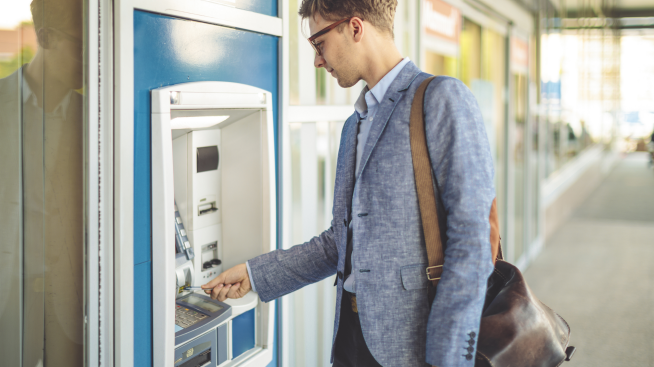How do ATMs work?

Automated Teller Machines (ATMs) help bring banking services closer to you, even on the move. The days of searching for your bank branch to make a withdrawal or check your balance are a part of the past. Instead, you may often find an ATM just a short distance away, in stores, on the street or even at festivals or pop-up shops.
These handy machines are a way for banks to meet consumers where they are. Most people use ATMs to withdraw cash and access account information, but as the technology behind them evolves, they can also do much more. That’s why we’re here — to dig into getting the most out of your ATM.
What is an ATM?
The name itself, automated teller machine, is a reference to bank tellers who help you conduct financial transactions at your bank branch.
An ATM gives you a PIN-protected connection to your bank. When you open a bank account there’s usually an opportunity to create a Personal Identification Number (PIN). This debit card PIN grants you access to your accounts on the phone and at an ATM.
The benefits of ATMs
ATMs provide many distinct conveniences. These include cash in hand, account information, deposit capabilities for cash and checks and other financial transactions. No matter how modern and digital the world gets, we all need cash sometimes and can’t always get to a bank teller to make a withdrawal.
Thankfully, ATMs are seemingly everywhere. Since ATMs typically outnumber bank locations, you’re likely to find one nearby.
It’s usually preferable to use your bank-associated ATM because otherwise you may incur fees from your bank and from the ATM owner. So, another benefit is not having to pay these transaction fees when you use ATMs from your bank’s network. Other ATMs may notify you of these fees before your transaction finalizes. So, there’s often an opportunity to cancel your transaction before having to pay the fee.
ATM transactions
Let’s explore the transactions available to you at your nearest ATM. You’ll often find that your banks in-network ATM provides access to more services than out-of-network ATMs do. Here's a list of potential transactions you could carry out at an in-network ATM:
- Withdraw cash: Many ATMs have evolved from dispensing limited bills (for instance, $20 bills only) to now offering a variety of denominations. For example, a machine that may dispense $5s and $100s in addition to $20s. It’s helpful to note that withdrawals may be subject to withdrawal limits. Sometimes that’s a set amount per day, and other times it’s per transaction.
- Check your account balance: You can check balances for any account associated with your debit card, either onscreen or printed out from the machine.
- Deposit cash or checks: Whether it’s cash or checks, you can handle the whole deposit and collect your receipt right at the ATM. While you can deposit checks on many mobile bank apps, depositing cash requires either an in-network ATM or going to your bank branch.
- Transfer funds between accounts: Depending on which ATM you use, you may be able to move money between accounts. Typically, this would have to be an in-network ATM associated with your account's bank. Unlike withdrawals, these transfers usually aren’t subject to limits.
- Pay bills: Sometimes in a pinch, you might not have time to make the deadline for paying specific bills. Depending on the ATM, it could help you get that bill paid on the go and even provide a dated receipt for proof of payment.
- Use an ATM with your digital wallet: Even when you don’t have your ATM or debit card, you might have your phone handy. Thanks to the latest ATM innovations, you can still use many ATMs even when you leave your card at home.
There are only a few things you can’t do at an ATM that you can do at your bank. If you need to exchange currency, deposit coins or meet with a teller, for instance, it may be time to tap into your bank’s location finder for your nearest branch.
The impact of ATMs
ATMs helped revolutionize the banking industry by better connecting bank customers to their accounts. Before ATMs, banks were rarely open on the weekends or beyond the traditional 9-to-5 workday, limiting customers’ access to services. The advent of ATMs, which are typically readily available, has helped improve customer relationships with their banks.
In summary
ATMs have brought change to the way we bank as well as the world of banking. Best of all, ATMs keep getting better at keeping us close and connected to our bank accounts. You can check out your account balance, get cash or make a deposit thanks to your bank’s ATMs.



